Fussen, in the Bavarian (southeastern) section of Germany, is home to the most iconic castle in the entire country. Although Neuschwanstein (“New Swan Castle”) looks like a high-end medieval structure, it was actually built in the 1870s, around the time of the Eiffel Tower and our own wild west. It had a modern kitchen for its day and a heating system that makes the place look actually livable.
Getting here was an adventure, as we were re-routed because of a train strike and did not arrive in town until very late in the evening. And one of our mandatory connections will forever serve as the reminder as to why you pack light. We would have never made the connection otherwise. The cab driver spoke his only words of English when we arrive to a dark and locked hotel: “Ummm, problem!” Fortunately the innkeeper had left us a key in the mailbox.
Fussen is the transportation hub, and has sights all its own. But a couple miles outside of town lies the small collection of tourist-oriented buildings called Hohenschwangau (Upper Swan Town). There has been a knight’s castle here (i.e, a working man’s military outpost as opposed to a king’s residence) for something like 900 years, being rebuilt several times and in the most recent rendition modernized for the Bavarian royal family into which mad king Ludwig was born. This older castle is very well restored and quite intriguing in itself.
But when Ludwig grew up, he wanted to build a castle of his own, higher on the hill. This is Neuschwanstein, (New Swan Castle), named after the opera (Swan Lake) of Ludwig’s idol, Wagner. It was never finished, as Ludwig was declared insane, deposed, and died before he could fully move in. It is hauntingly fitting that the throne room is complete except for one thing: the throne.
Fantastic countryside and beautiful castle. Gives new meaning to “if you build it, they will come.”
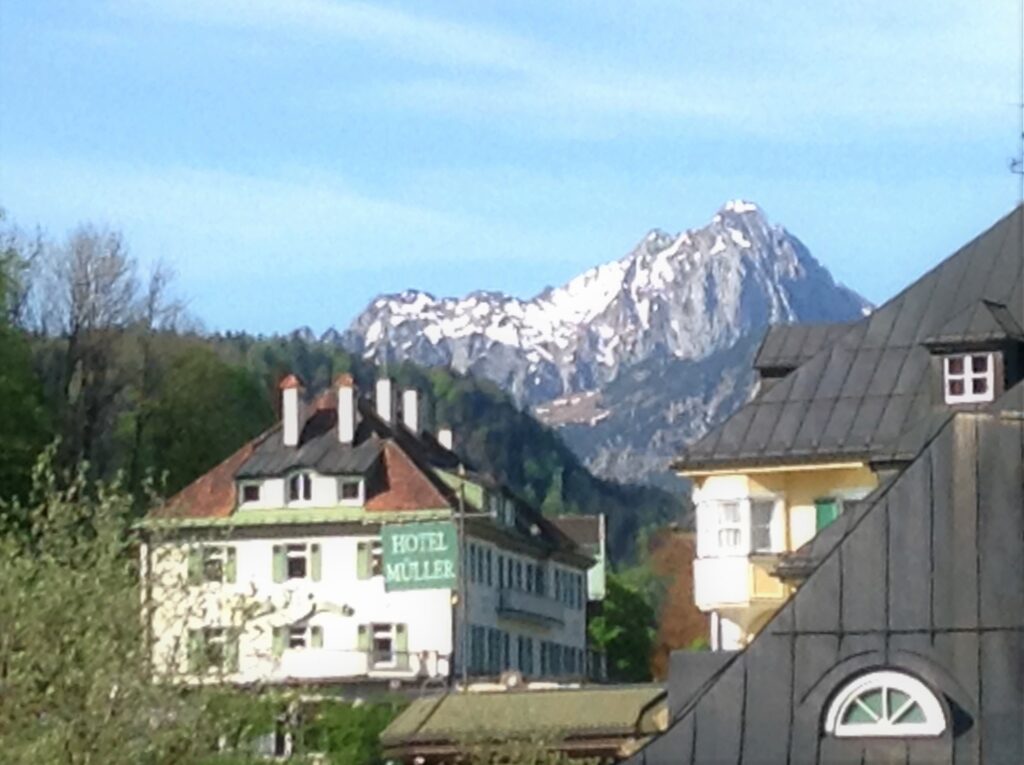
Arriving at night, this view from our hotel room was our introduction to the place the following morning. 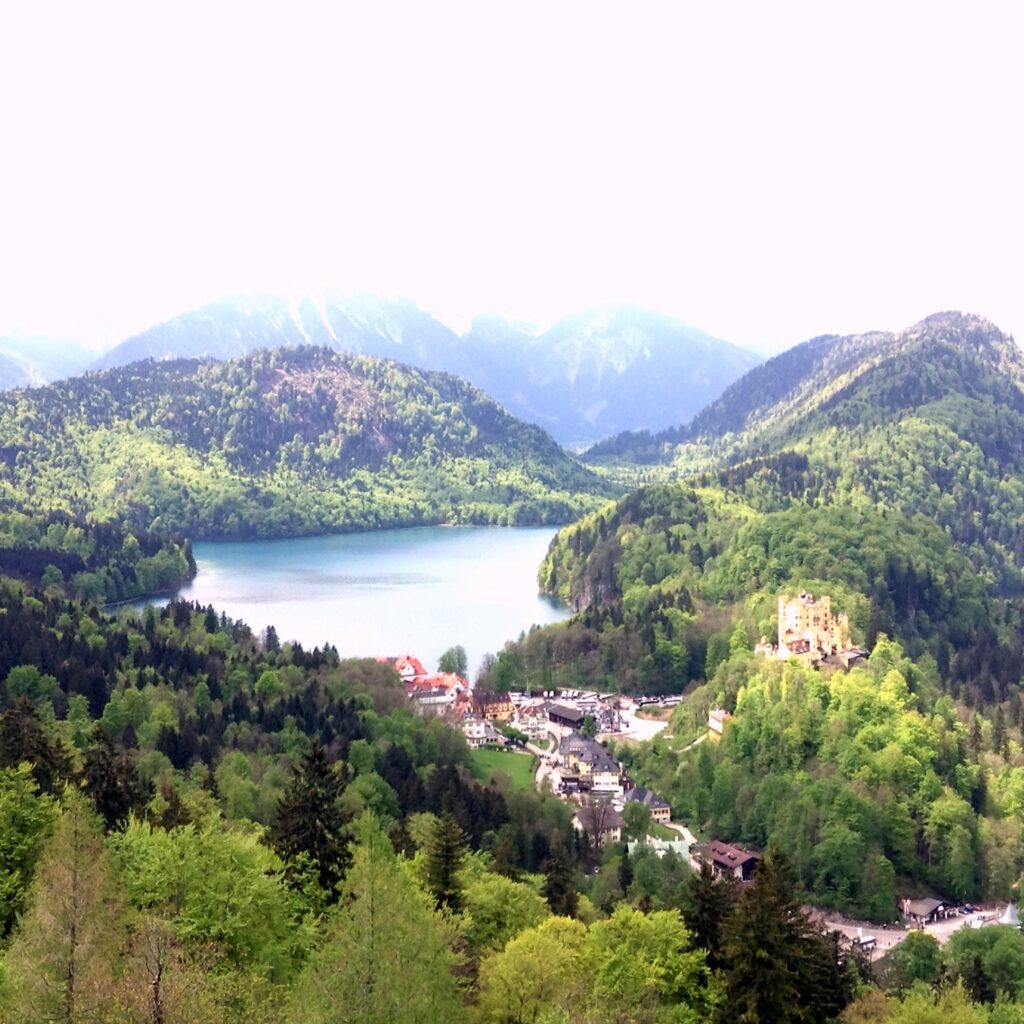
You can see why they named the first castle “Upper” Schwangau. Our hotel is at the base of the hill. This view is from the newer castle. 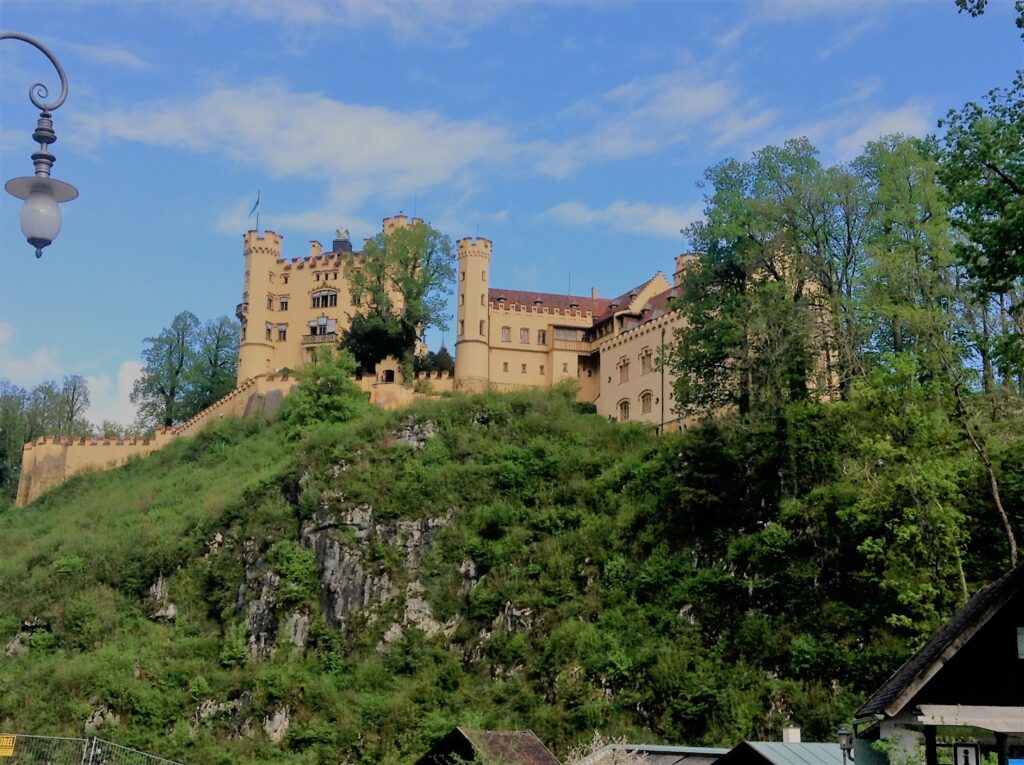
Here is a closer view as we started up the hill to see the older castle. 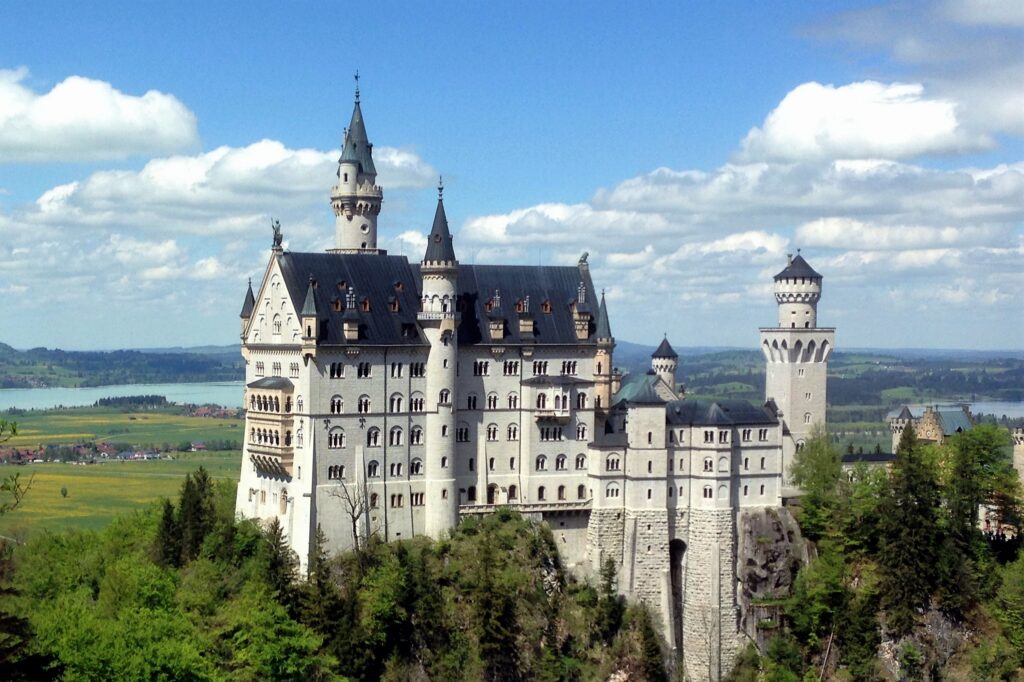
But there is no doubt that Ludwig’s castle is the star of the show. 
The previous picture is taken from this location, a small footbridge called “Mary’s Bridge.” 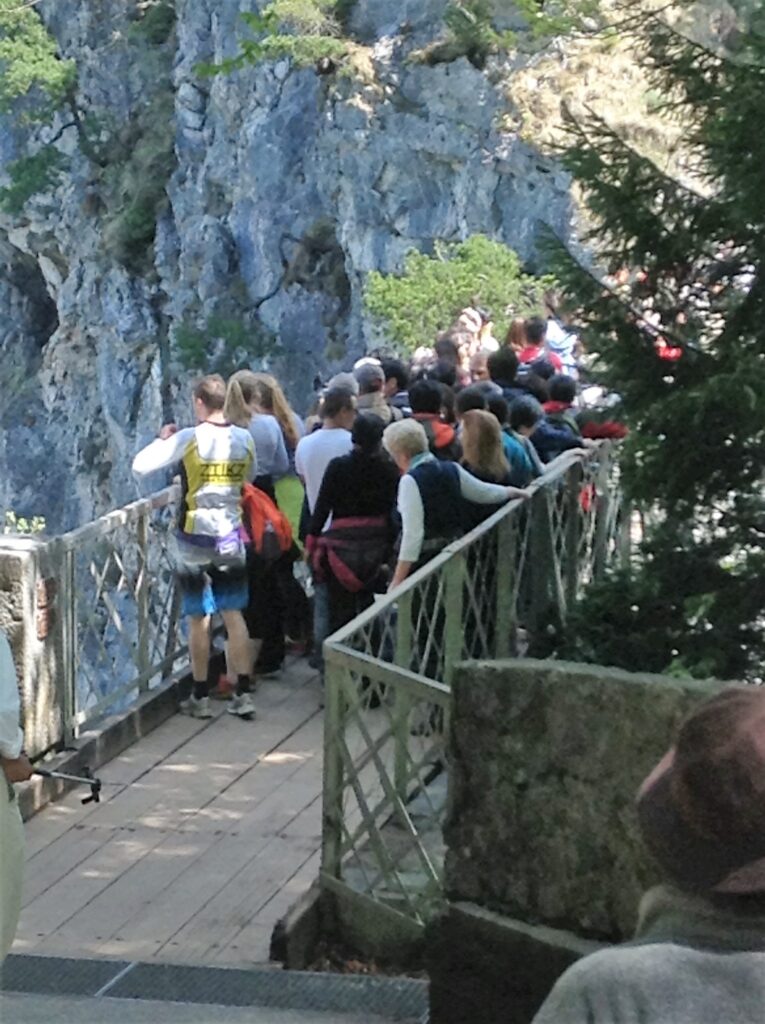
And here is the crowd of people who want to go just far enough onto the bridge to get the show, then scurry back to safety. 
This is the gorgeous view of the countryside from Neuschwanstein. 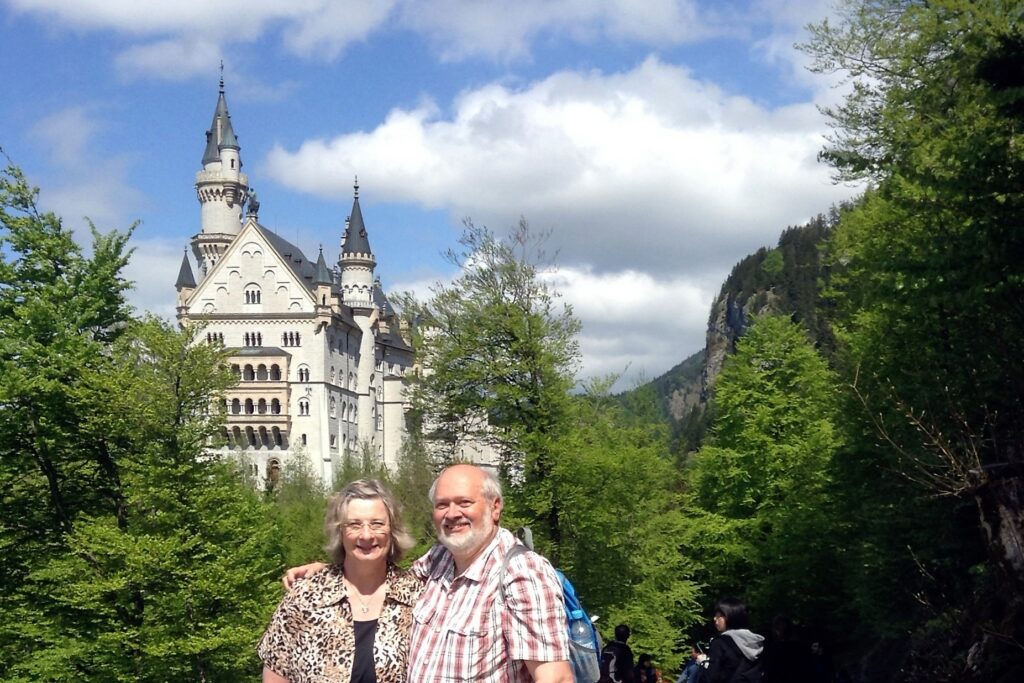
We propped the ipad on a trash receptacle so we could get a selfie from the path. 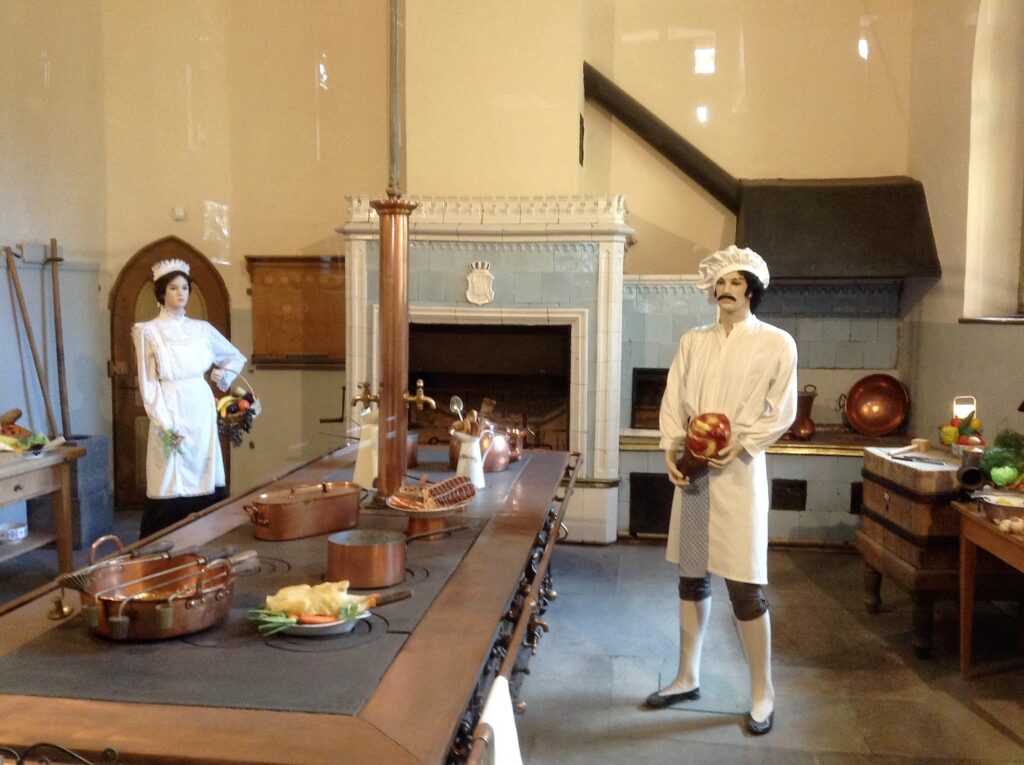
Mannequins pose in the thoroughly modern late 1800s kitchen. 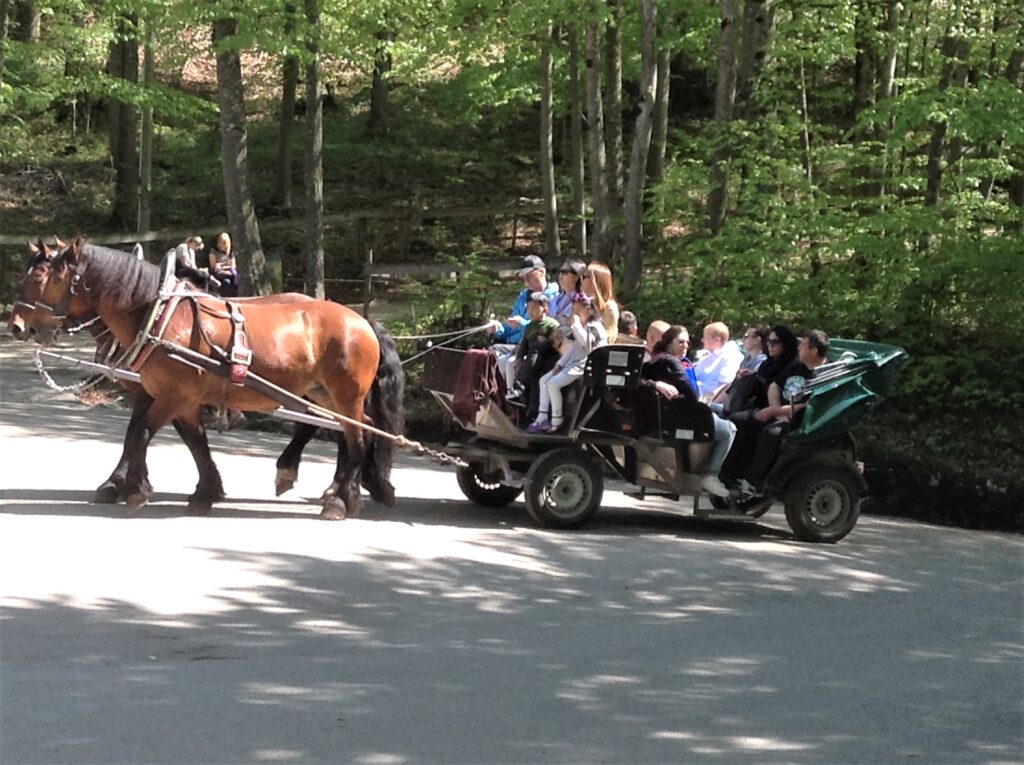
It was a very long, steep walk to the castle. In the true spirit of market pricing, it costs half as much to ride down as to ride up, so we finally succumbed and were grateful to rest our weary but satisfied bodies for the return trip.